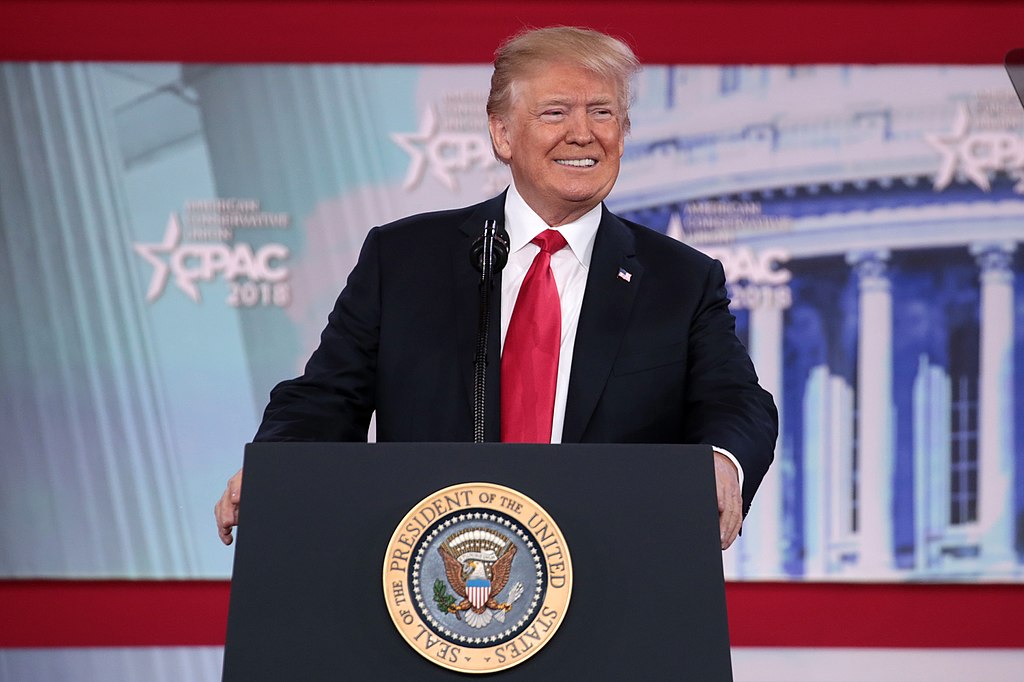President-elect Donald Trump has outlined a series of ambitious initiatives aimed at addressing financial inequality in rural areas for 2025. These plans are designed to tackle systemic challenges in agriculture, infrastructure, and education, promising a renewed focus on empowering economically disadvantaged regions.
Investing in Rural Infrastructure to Bridge Economic Gaps
Central to Trump’s initiative is a massive investment in rural infrastructure, which includes enhancing transportation networks, broadband connectivity, and renewable energy. The administration plans to allocate $100 billion to expand high-speed internet in underserved areas, addressing a digital divide that has hindered access to education, job opportunities, and modern farming technologies.
Agricultural reforms also play a significant role in Trump’s rural strategy. The White House has announced plans to introduce subsidies for small and medium-sized farms while promoting sustainable practices. These measures aim to counteract the economic dominance of large agricultural conglomerates, which have historically marginalized smaller producers.
Critics, however, remain skeptical of whether these measures will produce lasting changes. “Broadband expansion is great, but will rural families see it soon enough?” questioned Nicole Thompson (@RuralRevive), a Twitter user from Iowa.
Strengthening Education and Job Training Programs
Trump’s plan includes substantial investments in education, specifically tailored for rural communities. A new federal program, Rural Workforce Futures, aims to provide $15 billion for job training initiatives in emerging industries such as clean energy and tech. Additionally, $8 billion has been earmarked for rural schools to improve STEM education and infrastructure, equipping students with the skills needed to thrive in a rapidly evolving economy.
While the administration touts these efforts as revolutionary, some experts worry about implementation challenges. Critics point out that previous attempts to close the financial inequality gap have often been stymied by bureaucratic delays and lack of accountability.
“Another round of promises for rural schools—how many times have we heard this before?” tweeted journalist Mike Landon (@SmallTownMike). Similarly, Sarah Collins (@FarmersFirst), an agricultural advocate, expressed doubt, writing, “Trump’s subsidies could help, but only if they’re accessible to real farmers, not big corporations.”
Social Media Reactions Highlight Divided Opinions
The initiatives have sparked diverse reactions online. Supporters laud the administration for focusing on neglected rural areas, while detractors remain cautious about the potential pitfalls.
- “Finally, some attention to rural America. We’ve been forgotten for too long!” – Amanda Peters (@HeartlandHope)
- “Bold promises, but where’s the follow-through? These communities can’t afford another flop.” – James Carter (@EquityForAll)
- “Expanding broadband is game-changing if they actually do it. Fingers crossed!” – Laura Evans (@TechForTowns)
- “Why does this feel like another headline-grabbing stunt? Time will tell.” – Daniel Marks (@PolicyRealist)
- “Trump focusing on small farms is good, but what about access to markets?” – Jenna Taylor (@AgriTruth)
- “Rural schools need this investment yesterday! Please make it happen.” – Melissa Green (@EducateRural)
Strengths and Weaknesses of the Plan
The strengths of Trump’s initiatives lie in their comprehensive scope, addressing key issues like infrastructure, education, and agriculture. The significant financial commitment demonstrates a willingness to tackle these challenges head-on. However, weaknesses include potential bureaucratic roadblocks and concerns about equitable distribution of funds.
For this plan to succeed, clear guidelines on funding allocation and robust oversight mechanisms must be established. Ensuring rural voices are part of the decision-making process will be critical to fostering trust and long-term impact.



 Canada to Avoid Tariffs on U.S. Food and Essential Goods Amid Trade Tensions
Canada to Avoid Tariffs on U.S. Food and Essential Goods Amid Trade Tensions  Mexico Gains Preferential Tariff Treatment from U.S. Amid Trade Talks
Mexico Gains Preferential Tariff Treatment from U.S. Amid Trade Talks  Argentina Senate Blocks Milei’s Supreme Court Picks Amid Political Tensions
Argentina Senate Blocks Milei’s Supreme Court Picks Amid Political Tensions  China Vows Retaliation as Trump Imposes Sweeping Tariffs on Global Trade
China Vows Retaliation as Trump Imposes Sweeping Tariffs on Global Trade  Trump Imposes 10% Reciprocal Tariffs, Targets China and EU
Trump Imposes 10% Reciprocal Tariffs, Targets China and EU  Disability Rights Groups Sue Trump, Musk Over Social Security Cuts
Disability Rights Groups Sue Trump, Musk Over Social Security Cuts  Senate Passes Bill to Block Trump’s Canada Tariffs Despite GOP Resistance
Senate Passes Bill to Block Trump’s Canada Tariffs Despite GOP Resistance  South Korea Scrambles to Mitigate Impact of Harsh U.S. Tariffs on Exports
South Korea Scrambles to Mitigate Impact of Harsh U.S. Tariffs on Exports  Global Markets Reel as Trump’s Tariffs Spark Trade War Fears
Global Markets Reel as Trump’s Tariffs Spark Trade War Fears  Xi Jinping and EU Leaders to Visit Vietnam Amid Rising US Tariff Pressures
Xi Jinping and EU Leaders to Visit Vietnam Amid Rising US Tariff Pressures  Senate Advances Trump’s Tax Cut Plan Amid Debt Concerns
Senate Advances Trump’s Tax Cut Plan Amid Debt Concerns  NSA Director Timothy Haugh Fired Amid Leadership Shake-Up
NSA Director Timothy Haugh Fired Amid Leadership Shake-Up  Taiwan Criticizes New U.S. Tariffs, Cites Impact of Tech Curbs on China
Taiwan Criticizes New U.S. Tariffs, Cites Impact of Tech Curbs on China  South Korea Faces Snap Election After President Yoon’s Impeachment
South Korea Faces Snap Election After President Yoon’s Impeachment  Trump Administration Freezes $510M in Grants to Brown University Over Antisemitism Claims
Trump Administration Freezes $510M in Grants to Brown University Over Antisemitism Claims  Elon Musk’s Possible Exit from DOGE Seen as Bullish Signal for Tesla Stock
Elon Musk’s Possible Exit from DOGE Seen as Bullish Signal for Tesla Stock 






























